UPSC Daily Current Affairs - 19th January 2024 | Current Affairs & Hindu Analysis: Daily, Weekly & Monthly PDF Download
GS-I
Nayagarh Kanteimundi Brinjal
Subject: Geography
Why in News?
Recently, Nayagarh Kanteimundi Brinjal received a GI Tag.
About Nayagarh Kanteimundi Brinjal:-
- Location: Odisha.
- Nayagarh Kanteimundi Brinjal is known for its prickly thorns on the stems and the whole plant.
- The green and round fruits contain more seeds as compared to other genotypes.
- It is famous for its unique taste and relatively short quick cooking time.
- The plants are resistant to major insects.
- They can be grown with minimal pesticide.
- It is being widely cultivated in Nayagarh district of the state.
- The growers are getting a yield of up to 200 quintals per hectare and selling at around Rs 60 per kg.
- Historical records also suggest that the locals got the brinjal from the hilly areas.
- They collected seeds from it and started raising seedlings nearly 100 years ago.
Source: Indian Express
Guruvayur Temple
Subject: Art and Culture
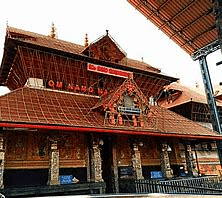
Why in News?
The Prime Minister, who is on a two-day visit to Kerala, offered prayers at Sreekrishna Temple, Guruvayur, recently.
About Guruvayur Temple:
- Guruvayoor Sree Krishna Swamy Temple, also known as the Dwarka of the South, is dedicated to Lord Vishnu and the young form of Lord Krishna.
- It is located in the small town of Guruvayur, in the Thrissur District of Kerala.
- The earliest temple records date back to the 17th century, but other literary texts and legends indicate that the temple may be around 5000 years old.
- Features:
- Lord Krishna, or Guruvayoorappan, is the chief deity of this temple.
- The temple is built in the traditional Kerala architectural style.
- The central shrine is believed to have been rebuilt in 1638 C.E.
- Structures like the Nalambalam (temple structure surrounding the sanctum sanctorum), Balikkal (sacrificial stone), and Deepasthambham (pillar of lights) are situated on the temple premises.
- The wall of the sanctum sanctorum is decked with ancient 17th-century murals.
- Another famous sight here is the Dwajasthambam. It is a flagstaff, around 70 feet tall, fully covered with gold.
- One of the most popular offerings at Guruvayoor temple is Thulabharam, where devotees are weighed against bananas, sugar, jaggery, and coconuts equivalent to their weight on a giant pair of scales.
- The temple is also noted for being home to a large population of captive male Asian elephants.
- The Punnathur Kotta elephant sanctuary, where 56 elephants live, is very close to the temple.
Source: The Hindu
Somnath Temple: A Historical Perspective
Subject: History

Why in News?
The inauguration of the Ram temple in Ayodhya on January 22, 2024, has sparked discussions about the role of politics and religion in India.
- In this historical analysis, we delve into the lesser-known aspects of another significant temple, the Somnath Temple, to understand its complex historical background and the British influence on its perception.
Somnath, Till 1947
- Historical Significance: Located in Prabhas Patan, Veraval, Gujarat, Somnath is a revered Hindu pilgrimage site.
- Temple’s Legacy: The temple is known as the “holy place of the First Aadi Jyotirling Shree Somnath Mahadev” and holds religious significance.
- Maratha Queen’s Effort: In 1782, Maratha queen Ahalyabai Holkar built a small temple at the site, but the grandeur of the original was not restored.
Somnath’s Decline
- Historical Attacks: The temple faced numerous attacks throughout history, including the devastating raid by Mahmud of Ghazni in 1026 CE.
- Diverse Rulers: While some Muslim rulers permitted worship at the temple, such as Akbar in the sixteenth century, others, like Aurangzeb, ordered its destruction in 1706.
- Abul Fazl’s Remark: Historian Abul Fazl described Mahmud of Ghazni’s raid as “the plunder of the virtuous,” acknowledging the temple’s significance.
- British Intervention: In 1842, British Governor General Lord Ellenborough used the “gates of Somnath” as a symbol of avenging an insult during an Afghanistan expedition.
After Independence
- Junagadh’s Accesion to Pakistan: After Independence, the Nawab of Junagadh attempted to accede to Pakistan, leading to unrest.
- Sardar Vallabhbhai Patel’s Decision: On November 12, 1947, Patel announced the reconstruction of Somnath, endorsed by the Union Cabinet.
- Mahatma Gandhi’s Suggestion: Gandhi proposed that the temple’s funding should come from the public, leading to the creation of a Trust under K M Munshi.
Nehru’s Opposition to the Inauguration
- Political Implications: Nehru opposed President Rajendra Prasad’s participation in the temple’s spectacular opening.
- Concerns about Secularism: Nehru expressed reservations about the government’s involvement in a ceremony with potential political and revivalist implications.
- Financial Concerns: He criticized the Saurashtra government’s contribution to the event, citing austerity measures and economic challenges.
- Secular State: Nehru emphasized the importance of India being a secular state and not associating with religious events.
- Opposition to External Affairs Circular: He objected to a circular requesting the collection of water, soil, and twigs from foreign countries for the ceremony.
Conclusion
- The story of Somnath temple’s revival encapsulates India’s complex journey through history, politics, and religion.
- It highlights the delicate balance between preserving historical heritage and upholding the principles of a secular state.
Source: The Hindu
GS-II
Maldives-China Relations: History, Changing Dynamics in the Present
Subject: International Relations
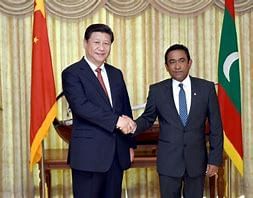
Why in News?
Nestled in the vast expanse of the Indian Ocean, the Maldives, with its modest landmass and population, may seem unassuming at first glance.
- However, this archipelago has become a focal point in the geopolitical landscape, drawing attention from global powers like India, China, and the United States.
- To understand its current significance, it is crucial to delve into the historical and contemporary dynamics that have shaped the Maldives’ role in the Indian Ocean region.
- Strategic Role for the British Empire: The Maldives played a significant role for the British Empire in the late nineteenth century, aiding in the expansion of commercial and military influence in the Indian Ocean and beyond.
- Preeminent Power: Before becoming a modern political flashpoint, the Maldives served as a crucial outpost for the British Empire.
- Ancient Connections: China maintains that its relationship with the Maldives dates back centuries, including interactions during the Tang dynasty (7th century AD) and along the ancient Silk Road.
- Ming Dynasty Navigator: The famous Chinese navigator, Zheng He, visited the Maldives in the early 15th century, leaving historical traces of this connection.
- Contemporary Diplomacy: Diplomatic relations between the People’s Republic of China and the Maldives were officially established in 1972, with economic and trade ties initiated in 1981.
- Xi’s Visit: In 2014, under President Xi Jinping’s leadership, China and the Maldives solidified their relationship, with Xi becoming the first Chinese head of state to visit the Maldives.
- Belt & Road Initiative (BRI): The Maldives was among the first South Asian nations to join the One Belt, One Road initiative, now known as the Belt & Road Initiative (BRI).
- President Muizzu’s Visit: President Mohamed Muizzu’s visit to China after taking office marked a milestone. It was seen as a “new beginning” and a departure from previous Maldivian leaders’ foreign policy choices.
- China’s Expanding Economic Cooperation: China’s economic cooperation with the Maldives has been on the rise, causing unease in India.
- India’s Concerns: India’s “hegemonic neighborhood first” policy has led to concerns about Beijing’s growing influence in South Asia.
- Geopolitical Tensions: The India-China rivalry and China’s increasing presence in the Indian Ocean have put the Maldives in the spotlight.
- US Engagement: The United States, recognizing the Maldives’ geostrategic significance, has intensified its engagement with the archipelago, opening its embassy in 2020.
- Bilateral Relations Upgrade: During President Muizzu’s visit, China upgraded its bilateral relationship with the Maldives from a “comprehensive friendly cooperative partnership” to a “comprehensive strategic cooperative partnership.”
- Maritime Calculations: Observers acknowledge that China’s maritime interests play a significant role in this diplomatic shift.
- Indian Annoyance: China candidly commented on India’s perceived annoyance with the Maldives’ growing ties with China, suggesting a lack of confidence in India’s bilateral relationship with the Maldives.
- The Maldives’ strategic location in the Indian Ocean has thrust it into the spotlight of global power struggles.
- As India, China, and the United States vie for influence in this crucial region, the Maldives finds itself at the intersection of geopolitical ambitions.
- Whether this triangular tug of war will reshape historical and strategic equations or lead to a delicate balance remains uncertain, but the Maldives’ significance on the world stage is undeniable.
Source: The Hindu
GS-III
Yen green bonds
Subject: Economy

Why in News?
Recently, REC Limited issued the first Japanese Yen green bonds worth JPY 61.1 billion.
Background:-
- REC Limited, a Maharatna Central Public Sector Enterprise (CPSE) under the Ministry of Power, has achieved a significant milestone by issuing its inaugural Japanese Yen (JPY) 61.1 billion (approximately Rs 3,500 crore) green bonds.
About Yen green bonds:-
- It is REC Limited’s eleventh venture into the international bond market and inaugural Yen Bond issuance, which is also the first Yen Green Bond issuance by any Indian PSU.
- These bonds, part of the $ 10 billion global medium-term notes programme, span 5-year, 5.25-year, and 10-year tenures.
- Proceeds from the bond issuance will be dedicated to financing eligible green projects, adhering to REC Limited’s green finance framework, Reserve Bank of India’s (RBI) external commercial borrowings guidelines, and relevant approvals.
- It is the first Yen Green Bond issuance by any Indian PSU.
- It is the largest ever Euro-Yen issuance in South and South East Asia.
- It is the largest Yen-denominated issuance from India.
- It is the largest non-sovereign Yen-denominated issuance ever from South and South East Asia.
About green bonds:-
- Green bonds are financial instruments designed to raise capital specifically for projects that have positive environmental and/or climate benefits.
- Green bonds function similarly to regular bonds, offering fixed or variable interest rates to investors. However, the key difference lies in the use of proceeds.
- They offer investors a platform to engage in good practices, influencing the business strategy of bond issuers.
Benefits:-
- Positive Impact on Environment
- Attracts Investment
- Alternative to Bank Loan: Green bonds are also an effective tool in driving down the cost of capital and reducing asset-liability mismatches.
Source: Business Standard
Windfall Tax
Subject: Economy
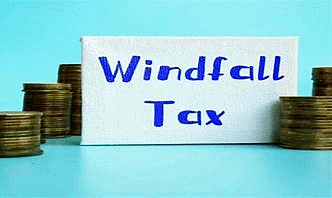
Why in News?
Recently, the Government of India slashed the windfall tax on petroleum crude to Rs 1,700 a tonne from 2,300 rupees a tonne.
Background:-
- The cut will be effective from Jan. 16, the order said.
About Windfall Tax:-
- Windfall taxes are designed to tax the profits a company derives from an external, sometimes unprecedented event.
- The term “windfall” refers to an unexpected rise in profits.
- These are profits that cannot be attributed to something the firm actively did, like an investment strategy or an expansion of business.
- Example: The most common industries that fall target to windfall gains tax include oil, gas, and mining.
- Typically, it’s levied as a one-off tax retrospectively over and above the normal rates of tax.
- It can be used to fund social welfare schemes, and as a supplementary revenue stream for the government.
Need for Windfall Tax:-
- To narrow the country’s widened trade deficit on account of rising prices of oil, gas, and coal.
- To redistribute the unexpected gains when high prices benefit producers at the expense of consumers.
- To fund social welfare scheme.
- As a supplementary revenue stream for the government.
Source: Economic Times
Commission for Air Quality Management (CAQM)
Subject: Environment and Ecology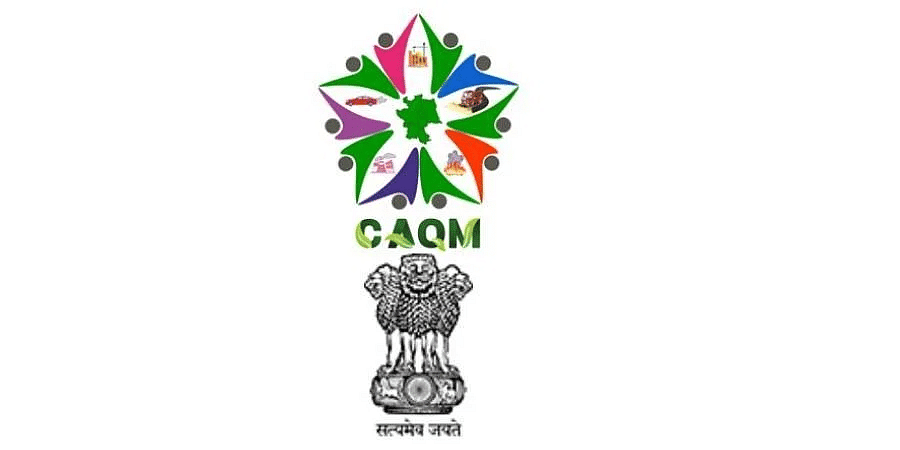
Why in News?
Recently, the Commission for Air Quality Management (CAQM) presented an action plan January 2, 2024 to the NGT.
Background:-
- It is aimed at improving the air quality in the National Capital Region (NCR) and its surrounding areas.
- CAQM’s proposed plan is multi-sectoral, detailing specific timelines and identifying responsible nodal agencies.
- Key aspects of the plan include reducing industrial pollution, curtailing air pollution from diesel generators (DG) sets and tackling emissions from thermal power plants (TPP).
About Commission for Air Quality Management (CAQM):-
- Establishment: 2020.
- It was formed by an ordinance in October 2020.
- HQ: Delhi. (CAQM)
- The commission replaces the Environment Pollution (Prevention and Control) Authority (EPCA).
- EPCA: it is a Supreme Court-mandated body tasked with taking various measures to tackle air pollution in the National Capital Region.
- It was notified in 1998 by Environment Ministry under Environment Protection Act, 1986.
Objectives of CAQM:-
- For Air Quality Management in National Capital Region and Adjoining Areas. ( Delhi and Air Pollution)
- For better co-ordination, research, identification and resolution of problems surrounding the air quality index and
- For matters connected therewith or incidental thereto.
Powers of the CAQM:-
- The rulings by the Commission on air pollution will override anything contained in any other law.
- The powers of the Commission will also supersede that of any other body in matters of air pollution..
- The Commission will have the power to take measures, issue directions and entertain complaints “for the purpose of protecting and improving the quality of air in the National Capital Region”.
- It will also coordinate action taken by states on air pollution and will lay down parameters for air quality and emission or discharge of environmental pollutants.
- It will also have powers to restrict industries in any area, carry out random inspections of any premises including factories and be able to close down an industry or cut its power and water supply in case of non-compliance.
- It will also be monitoring the measures taken by the States to prevent stubble burning.
Merits of CAQM:-
- Effective Mechanism to tackle Pollution: The permanent Commission envisages a multi-sectoral, public participatory, multi-state dynamic body for combating pollution on a war footing.
- More Teeth: It will now be binding on state governments to follow the directions of the Commission regarding air quality management.
- Consolidated Approach: The commission will have the power to coordinate with relevant state and central governments on the multi-sector plan including industry, power plants, agriculture, transport, residential and construction.
- Penal Powers: The penalty for non-compliance shall be imprisonment of up to five years or a fine up to Rs 1 crore, or both.
- Relieves Supreme Court: The Centre seeks to relieve the Supreme Court from having to constantly monitor pollution levels through various pollution-related cases.
- Participatory Democracy: the Commission would function under the oversight of the elected representatives with regular reports to the Parliament.
Source: Down to Earth
Chandaka-Dampara Wildlife Sanctuary
Subject: Environment and Ecology
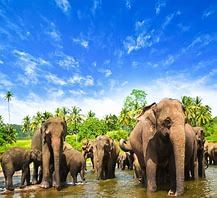
Why in News?
After relocating deer from Cuttack, the Odisha state government is planning to introduce Sambar and Gaur (bison) in the Chandaka-Dampara wildlife sanctuary.
About Chandaka-Dampara wildlife sanctuary:
- It is located in Khurda district of Odisha represents the north-eastern limits of Eastern Ghats.
- It is also a home to a number of threatened wild animals and birds.
- This landscape got sanctuary status in 1982.
- The climate of the area is tropical with three distinct and well-marked seasons i.e. summer, Rainy season and winter.
- Vegetation: Flora is moderately diverse with an intimate mixture of evergreen and deciduous elements. The area comes under semi-evergreen forest zone but the interplay of biotic factors has changed the original character of the vegetation.
- Flora: Dhaman (Grewia Tiliaefolia), Bankapasia (Kydia calycina), Jamu (Syzyggium Cuminii), Gandhana (Premna mucronata), Kansa (Hymenodictyon excelsum), Kusum (Schleichera oleosa), Marua (Vitex pinnata), Sidha (Lagerstroemia parviflora), Karanja, Thorny bamboo etc.
- Fauna: Elephants, Chital, Barking Deer, Wild Boar, Rhesus Monkey, Pangolin, Sloth Bear, Indian Wolf, Hyena and other mammals.
Source: The Hindu
|
63 videos|5408 docs|1146 tests
|
FAQs on UPSC Daily Current Affairs - 19th January 2024 - Current Affairs & Hindu Analysis: Daily, Weekly & Monthly
| 1. What is the historical significance of the Somnath Temple? |  |
| 2. How have the dynamics of Maldives-China relations changed over time? |  |
| 3. What are green bonds issued by Japan known as? |  |
| 4. What is a windfall tax? |  |
| 5. What is the role of the Commission for Air Quality Management (CAQM)? |  |
















